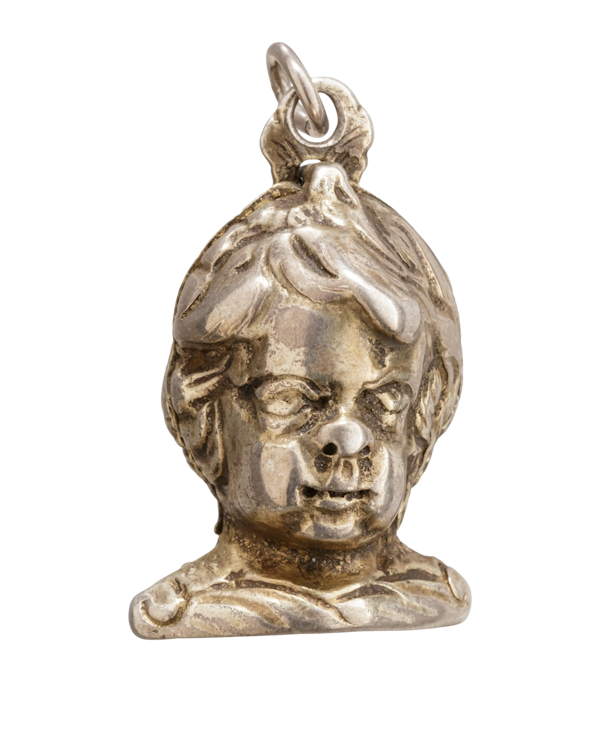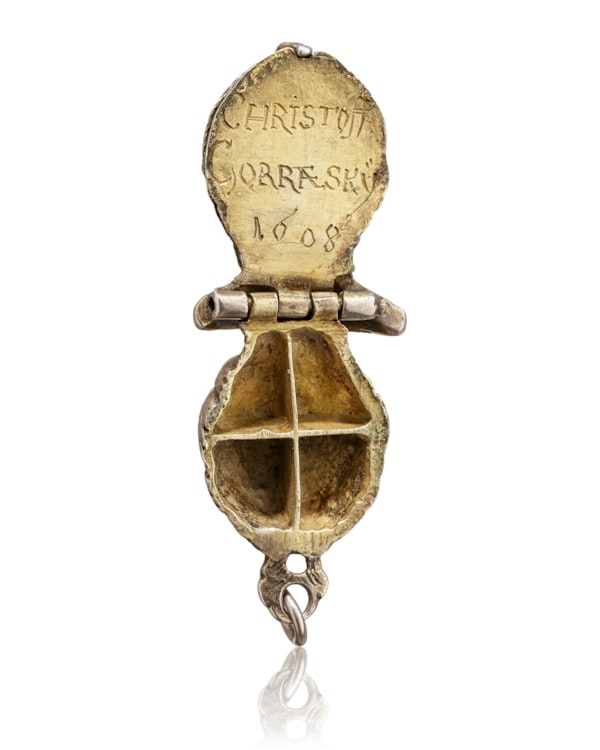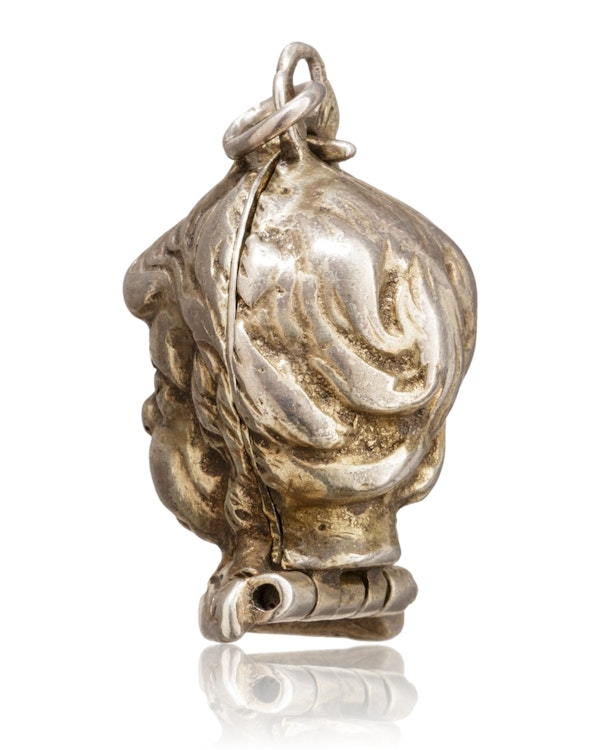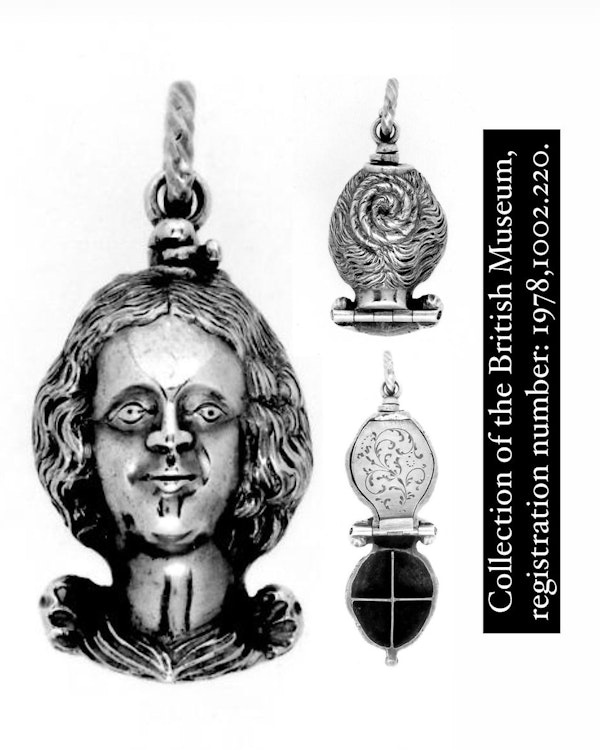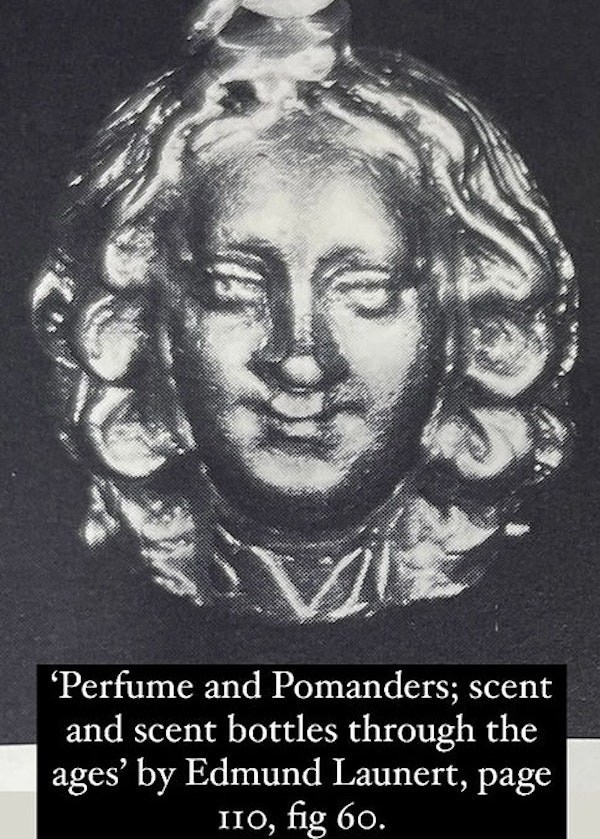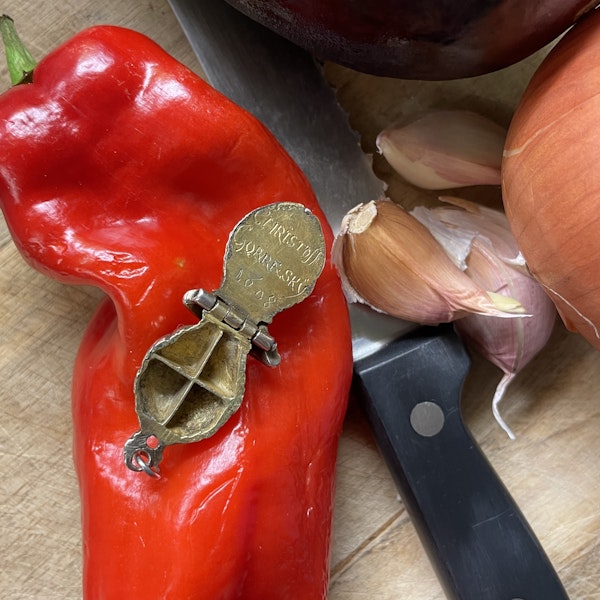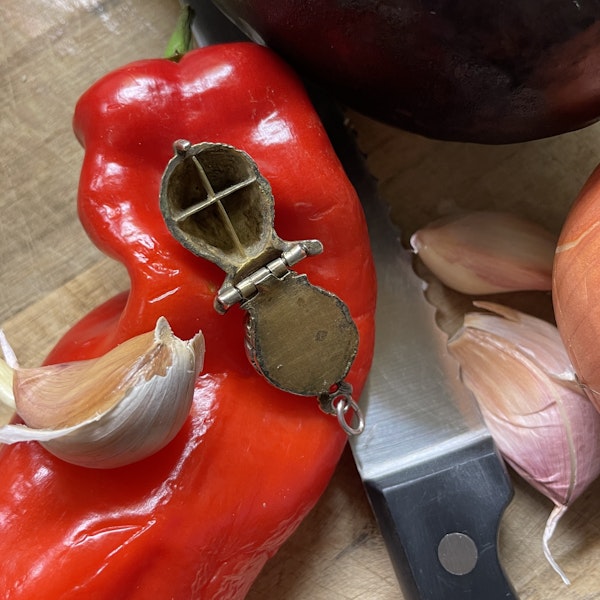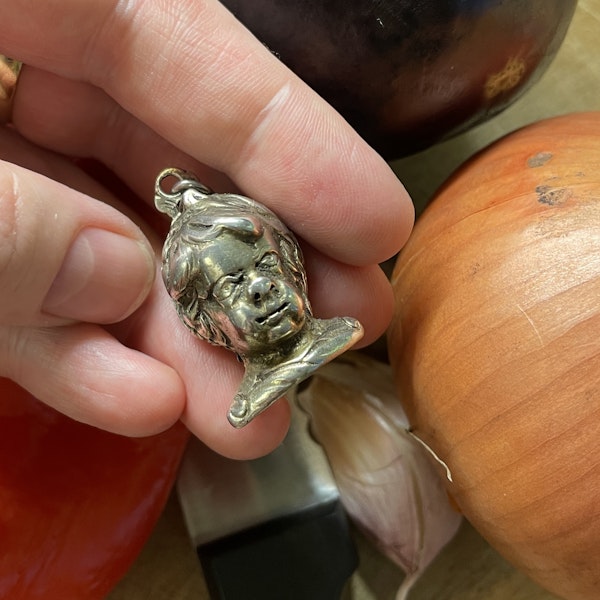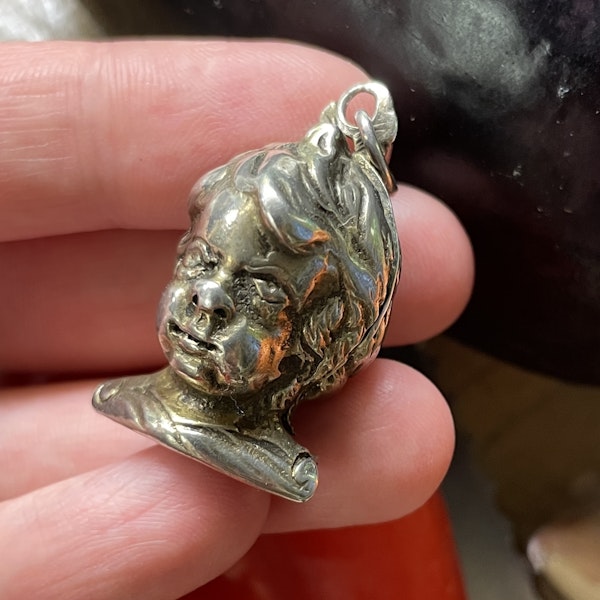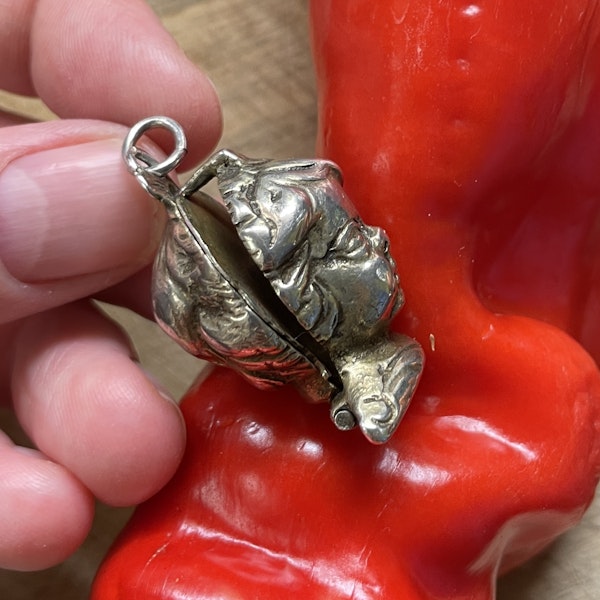A silver gilt pomander in the form of a putto’s head. German, early 17th century.
A silver gilt pomander in the form of a putto’s head. German, early 17th century.
£3,950.00
Description
A silver gilt pomander in the form of a putto’s head.
German, early 17th century.
Measures 3.4 x 2.1 x 1.9cm (excluding loose bail).
The pendant opens to reveal segmented sections to both sides of the interior which are separated by a hinged silver plate. The silver plate is engraved with the original owners name ‘CHRISTOFF GORRÆSKŸ’ and the date ‘1608’, the reverse of the silver plate is lightly engraved with a later owners name which is indecipherable, beneath which is the date ’1699’. The segmented compartments would have contained different solidified scents, each with their own specific protective properties.
In a period when plague and disease was rampant, the medical theory was that disease was carried by foul air. A pomander was considered an effective measure to protect the user of such illnesses.
A similar example can be found in the collection of the British Museum, registration number: 1978,1002.220.
Another example can be found in ‘Perfume and Pomanders; scent and scent bottles through the ages’ by Edmund Launert, page 110, fig 60.
| item details |
|---|
Product REF: A silver gilt pomander in the form of a putto’s head. German, early 17th century.
